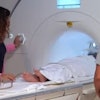Dr. Lukas Mueller of the University Medical Center Mainz will present a trial that included 964 treatment-naïve patients with HCC who underwent TACE as a first-line treatment at six tertiary care centers between 2010 and 2020. The researchers assessed the influence of BMD on median overall survival.
The median BMD was 147 Hounsfield Units (HU) (range, 117-176 HU), according to the findings. Patients with a high BMD (≥ 114 HU) had a median overall survival of 20.4 months, while patients with a low BMD (< 114 HU) had a lower median overall survival of only 14.8 months (p < .001), according to the findings. In multivariate analysis, besides albumin, bilirubin, tumor number, and tumor diameter, BMD remained an independent prognostic factor.
"BMD is an independent predictive factor for survival in patients with HCC undergoing TACE," Mueller noted.



















